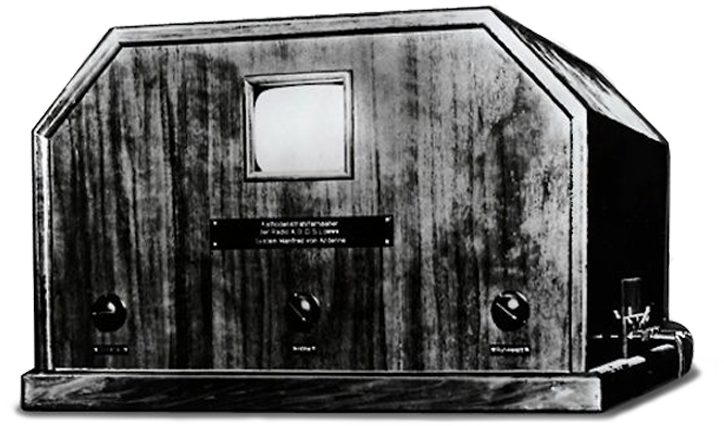World Television Day is celebrated on 21 November. It was proclaimed in 1996 by the United Nations General Assembly with the aim of encouraging the responsible use of television as one of the main channels for the dissemination of public information. But how has the world of television evolved over the years?
1926
The American inventor Philo Taylor Farnsworth was 21 years old when he made the first electronic television. This system captured moving images using a beam of electrons. This is what we know today as a primitive camera.

1934
The first fully electronic cathode ray tube television was manufactured by Telefunken in Germany. It was followed by other manufacturers in France and the United Kingdom (1936), and the United States (1938).
Before World War II, an estimated 19,000 aircraft were produced in the UK and 1,600 in Germany.

1949
Philips markets its first televisions. Today, Philips is considered one of the largest and most important technology companies in the world. Its main focus is on the electronics and healthcare sectors.

1950
The first remote control was the Lazy Bones, developed by Zenith Radio Corporation. It was a remote control that was connected to the television by a cable, and in fact, its operation was more mechanical than electronic, since it activated a small motor that was used to move the TV dial.

1954
The first colour television. Formed by a trichromatic system, a sequence of fields based on the primary colours red, green and blue (RGB).
RCA launched the first model, the CT-100, popularly known as “The Merrill”.

1955
The first wireless remote control. It worked with 4 light sensors placed in each corner of the television. Each sensor had a function: to turn the volume up and down and to turn the dial to one side or the other.
The remote control directed light onto these sensors and triggered the function, but, being a photosensitive system, the TV could go crazy if direct sunlight hit it.

1956
First television broadcasts in Spain. Television sets began to become popular in homes.
TVE began to broadcast regularly as a single channel, with programming designed to entertain viewers and bring the audience all the Spanish news of the time.

1960
The first portable television set was produced. Sony TV8-301 had an 8-inch, black-and-white screen and could be powered by mains electricity or two internal 6-volt batteries. It weighed 5.9 kg.
The 1960s is marked by various approaches to portable television and, beyond that, to pocket television.

1978
The first time that TVE broadcast in colour was in 1969, the Eurovision Song Contest from Madrid.
From 1973 onwards, colour and black and white broadcasts began to be combined. But it was not until 1978 that the definitive switch to colour took place, almost three decades after the first broadcast of this type was made in the United States in the early 1950s.

1997
The first domestic flat-screen television was made by Philips. It was 42 inches and used plasma technology.
It came onto the market at the astronomical price of 15,000 euros, making it a novelty only available to a few.

2008
Hyundai introduced the first 3D television to the public in Japan. It was a 46-inch set with a resolution of 1920 x 1080 pixels. The starting price was around 3,100 euros.
Not everyone who had the opportunity to test the system was very satisfied. Some people found wearing glasses annoying and the intermittency of the glasses seemed to adversely affect some users.

2009
The world’s first edge-lit LED TV created by Samsung. This high-definition TV offered users ultra-high contrast ratios and vivid colours, thanks to its innovative LED edge lighting. It was also the world’s thinnest.

2011
The first models arrived in 2005 and were known as Internet TVs, but from 2010 onwards they became known as Smart TVs. The first Smart TVs were launched on the market in 2011.






